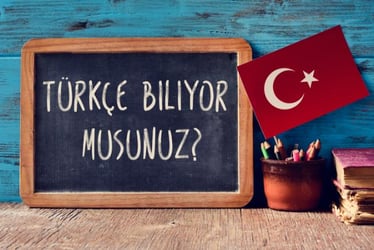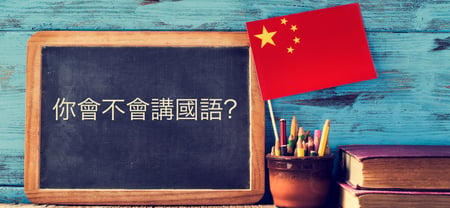Hmong–also known as Hmoob–, with its rich cultural heritage, is spoken by 2.7 million people globally. As a language that carries deep cultural significance, reaching the Hmong-speaking community can open doors to meaningful engagement and new opportunities.
But how do you find the right Language Services Provider (LSP) to assist you?
At LinguaLinx, we understand that selecting the right partner is key to effectively communicating with Hmong-speaking audiences. So where should you begin?
We’ve guided many clients through this process, and to help you get started, here are the top questions we recommend asking a potential LSP who will help you connect with the Hmong-speaking community.
8 Questions to Ask an LSP When Choosing Hmong Translation Services
1. Do They Understand the Nuances of Hmong Dialects?
Hmong is part of a dialect cluster known as the Chuanqiandian cluster, and it is spoken in several distinct dialects. The three main dialects of Hmong are:
- Hmong Daw (White Hmong): This is the most commonly spoken dialect among Hmong Americans and is the basis for the widely adopted Romanized Popular Alphabet (RPA) used in writing Hmong in the United States.
- Mong Njua (Green or Blue Hmong): Another major dialect spoken by Hmong communities, particularly in the U.S.
- Dananshan (Standard Chinese Miao): This dialect, primarily spoken in China, features eight distinct tones, compared to the seven tones used in Hmong Daw and Mong Njua.
Each of these dialects carries unique linguistic and cultural nuances. For example, the tonal differences can significantly affect meaning, making it crucial to select a linguist skilled in the specific dialect you are targeting.
Ensure that your chosen LSP has experience working with the specific Hmong dialect relevant to your target audience to guarantee accurate and culturally appropriate translations.
2. Do They Have Experience in Your Industry?
Industry-specific terminology can be complex and varies greatly. Whether you’re in healthcare, education, or government, it’s crucial that your LSP has translators who are familiar with your industry’s jargon and practices.
This experience ensures that your content is not only translated but also resonates with industry professionals and the Hmong-speaking community alike.
3. What Industry Qualifications Do They Hold?
The translation industry, like many others, is governed by standards that ensure quality and consistency. Look for an LSP that holds ISO 17100 certification, which is specific to translation services. This certification indicates that the LSP follows stringent processes for delivering high-quality translations.
Working with an ISO-certified LSP gives you confidence that your Hmong translations will meet global standards.
4. Is Their Process Transparent and Compatible with Yours?
An ISO certification guarantees a solid process, but it’s also important that this process aligns with your organization’s needs. Does their workflow require extensive input from your team? Can they adapt to your deadlines and working style without sacrificing quality?
Transparency in their process and adaptability to your specific requirements are crucial for a smooth collaboration.
5. Can They Manage Fluctuations in Time and Volume?
Business demands can be unpredictable. Your LSP should be capable of scaling up their resources quickly when needed, whether it's for a large-scale project or a tight deadline.
Ask about their contingency plans and how they manage unexpected changes in project scope or timelines.
6. Do They Offer Services in Other Languages?
While you may be focusing on Hmong now, you might need translations into other languages in the future. It’s more efficient to partner with an LSP that can handle multiple languages and regions, ensuring consistency in your messaging across all markets.
A versatile LSP can help streamline your operations as you expand into new linguistic territories.
7. Do They Provide Desktop Publishing Services?
Translation often involves more than just converting words from one language to another. It’s important to consider the context in which the translated text will be used. Will it be part of a printed brochure, a website, or an interactive application?
Hmong text can vary in length compared to English, which can affect layout and design. A good LSP should offer Desktop Publishing (DTP) services to ensure that your translated content looks as good as it reads.
8. Can You Review Their Previous Work?
Reviewing an LSP’s past projects can give you insight into their capabilities. Have they worked with clients in similar industries, or with similar linguistic needs?
Ask for case studies or references to understand their experience with Hmong translation and the outcomes they’ve delivered for other clients.
More Than Just Hmong Translation
Many LSPs may offer Hmong translation services, but the right partner will do much more. They’ll become an extension of your team, understanding your brand, industry, and specific needs.
By asking these critical questions, you’ll find an LSP that aligns with your goals, ensuring that your content is translated accurately and with the cultural sensitivity required to engage effectively with Hmong-speaking audiences.
Get A Quote for Your Hmong Translation Needs
Are you facing challenges with Hmong translation projects? Let's explore solutions together. We invite you to a no-cost, commitment-free consultation where we can discuss your specific needs.
Choose LinguaLinx for peace of mind in translation accuracy and cultural nuance. Our adherence to ISO 17100 and ISO 9001 standards, coupled with our two decades of expertise in the translation industry, ensures your message remains clear and effective across languages.
Trust us, as numerous global organizations do, to handle your translation requirements with utmost professionalism and precision.







